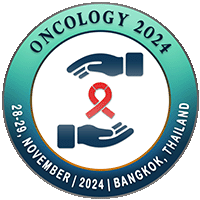
Aparna Katyal
P.G.I.M.E.R. & Dr Ram Manohar Lohia Hospital, IndiaTitle: Role of 3 tesla diffusion weighted MRI in evaluation of focal liver lesions
Abstract
Purpose: To evaluate the role of diffusion weighted imaging (DWI) in characterization of focal liver lesions (FLLs) using 3-T MRI.
Methods: MR evaluation was done using respiratory triggered DWI in addition to conventional and contrast-enhanced sequences. A total of 33 patients with 51 FLLs were evaluated qualitatively using visual assessment of DWI, and quantitatively using conventional ADC and normalized ADC measurements using spleen as the reference organ. Receiver operating characteristic (ROC) curve analyses was done to evaluate the utility of ADC for differentiation of benign and malignant lesions.
Results: Visual characterisation of lesions using DWI could differentiate benign and malignant lesions with a sensitivity, specificity and accuracy of 100%, 85% and 95.77% respectively. Mean ADC value of benign lesions was 2±1.05 (x10-3mm2/sec), malignant lesions was 0.84±0.13 (x10-3mm2/sec) and the difference was found to be statistically significant (P value<0.05). At proposed ADC cutoff of 1.12 (x10-3mm2/sec), area under ROC curve came out to be 0.843 and benign lesions could be differentiated from malignant ones with 100% sensitivity, 80% specificity and 94.36% diagnostic accuracy. The use of normalized ADC using the spleen as reference organ resulted in a more restricted distribution of ADC values compared to conventional ADC measurements.
Conclusion: DWI shows good potential for characterization of liver lesions. It should be included in routine MR protocol for hepatic imaging. Some benign lesions can be misclassified as malignant using DWI. Thus, it cannot be used as a stand-alone sequence and should be interpreted in conjunction with conventional and contrast-enhanced MR sequences.
Biography
TBA

